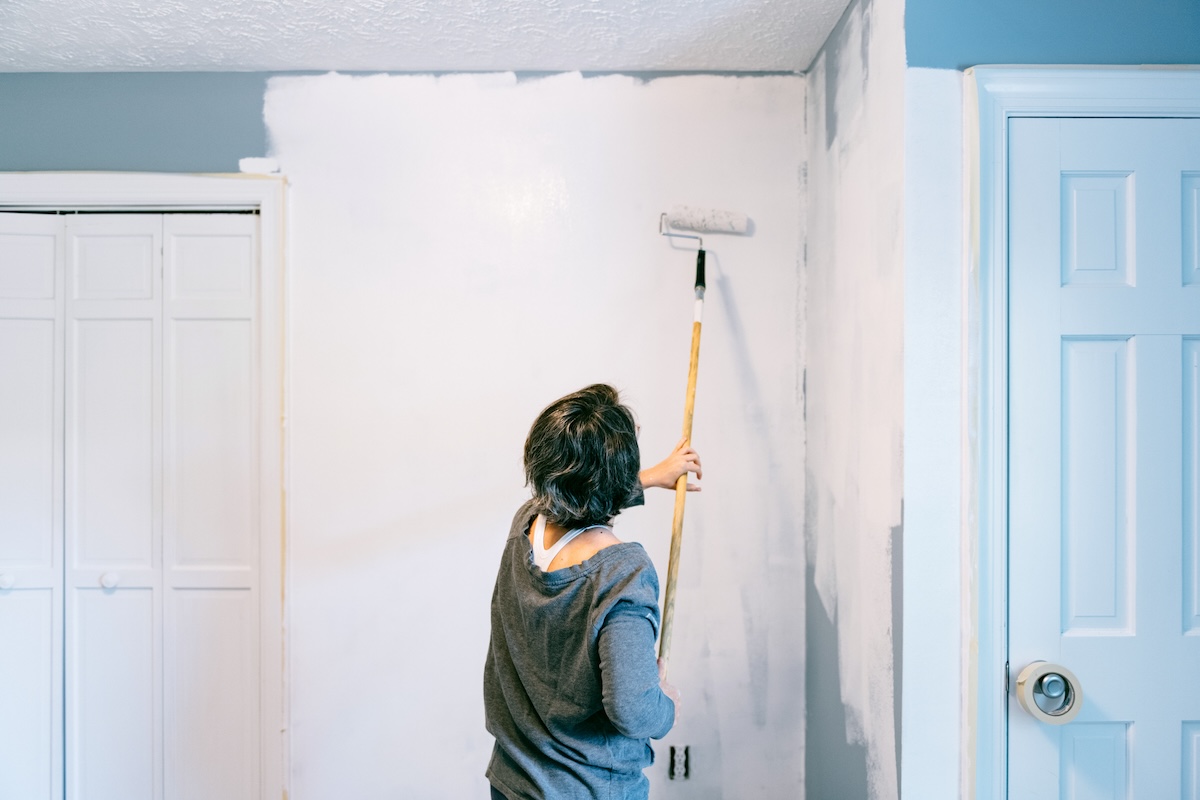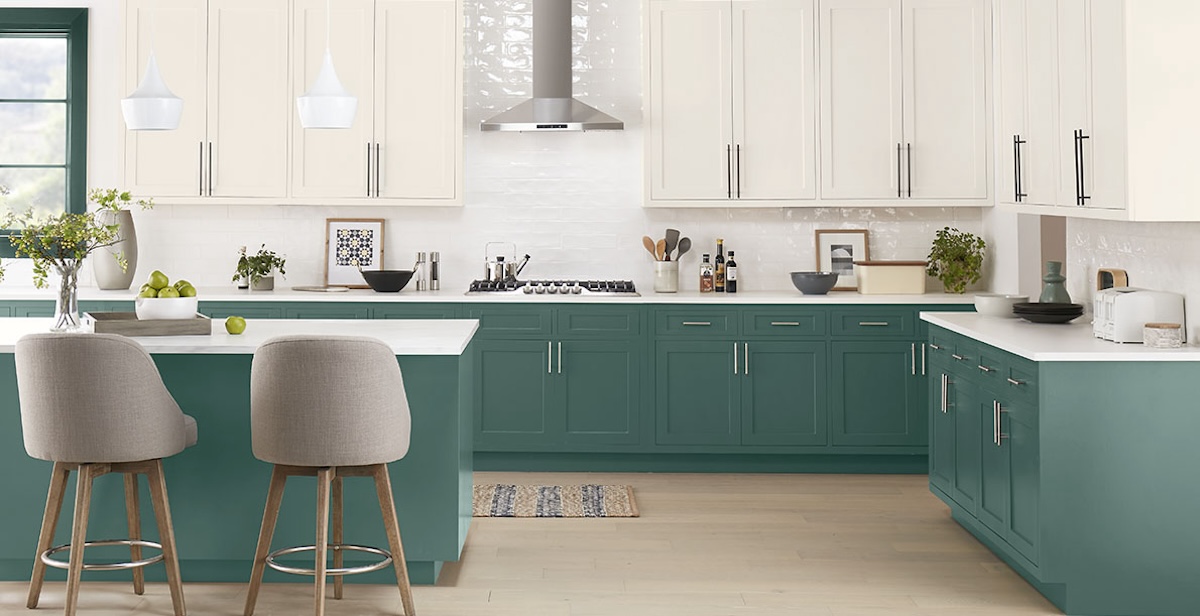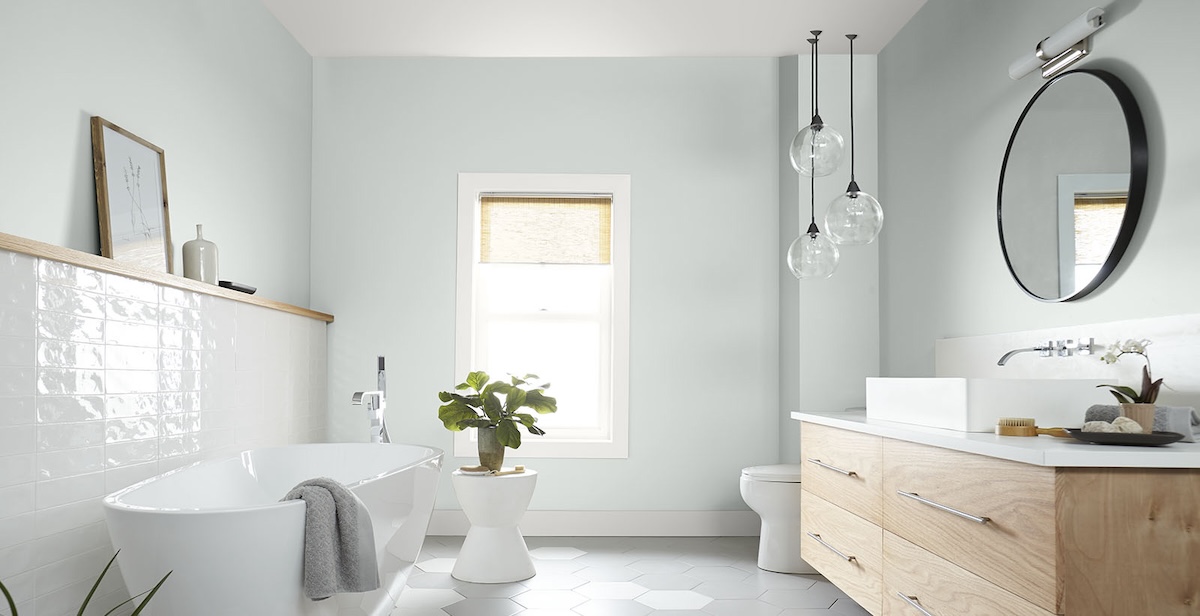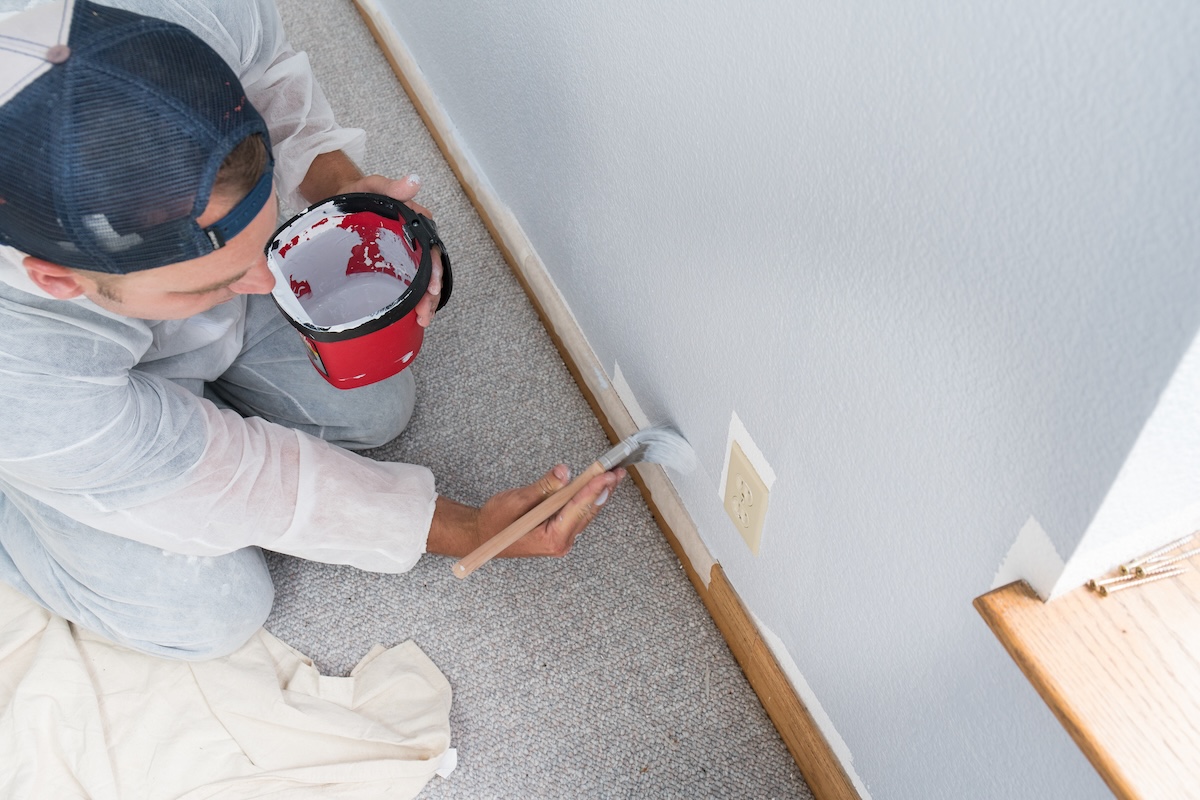

We may earn revenue from the products available on this page and participate in affiliate programs. Learn More ›
When you’re choosing fresh paint for your walls, after color, the next big decision is sheen. Light reflection on interior walls is an important part of the design and mood of a room. However, too much shine looks like wet paint, and a wall with too little shine can instead absorb light. Two middle-of-the-road options for paint finish, satin and semi-gloss, are quite popular for being neither too shiny nor too matte.
“Satin and semi-gloss each have their place in the home,” says Erika Woelfel, vice president of color and creative services at Behr. However, telling satin vs. semi-gloss apart can be somewhat tricky. Is semi-gloss shinier than satin? To answer, pay attention to the main ingredients: pigment, the powdery ingredient that gives paint its color; and resinous binder. The more resin a paint has, the shinier it is. That’s because it allows the paint to flow more and soaks up the powdery pigment well, making for a smooth consistency.
Semi-gloss, one step under high-gloss in terms of sheen, is shinier than satin because it has a higher percentage of resinous binder than pigment. Satin is shinier than eggshell and matte finishes for the same reason. Both semi-gloss and satin are available in traditional paint types including oil-based, latex, and low- or no-VOC (volatile organic compound) versions. However, the subtle differences in satin vs semi-gloss paint can make one a distinctly better fit for your project than another.
Satin Paint

Satin finish paint has a slight sheen, so it reflects light better than both eggshell and matte finish interior paints. But satin absorbs more light than semi-gloss paint, and thus is forgiving of pre-existing imperfections. So, with this in mind, what is satin paint used for? “A satin finish, like Behr Premium Plus Interior Satin Enamel, offers a soft, durable look that resists dirt—ideal for living rooms, hallways, and bedrooms,” says Woelfel.
If you’ve got dings and dents in your walls, cabinets, or soon-to-be-painted dresser, the flatter nature of satin will look better over pocks, divots, and scrapes since it draws the light in and tricks the eye into seeing a more even surface. If you want to deflect attention away from faults and blemishes without spending hours sanding them away, satin is the way to go.
That said, satin paint such as Benjamin Moore Regal Select Interior Paint in the satin/pearl finish is durable and somewhat light-reflective, so it works in areas where semi-gloss is too shiny. “It is perfect for adding a subtle contrast against walls painted in a matte or eggshell finish,” says David Underwood, associate technical project manager at Benjamin Moore.
Satin Paint Pros and Cons
| Pros | Cons |
| Covers dents and dings in the painted surface better than semi-gloss | Not as durable as semi-gloss |
| Light-reflective enough to brighten a small room | Lacks enough light reflectivity to highlight features like crown molding |
| Mutes glare | |
| Easy to clean |
When to Use Satin Paint
Use satin finish paint when you want to:
- Highlight a ceiling or other well-lit surface without creating too much glare
- Brighten up a hallway
- Cover living-area walls that have imperfections or require regular paint touch-ups
- Paint high-traffic areas
Semi-Gloss Paint

Semi-gloss paint’s higher percentage of resin compared to pigment results in a shinier, and therefore, more light-reflective finish than satin. When looking at the difference between gloss and semi-gloss paint on walls or trim, it’s the mirror-like finish of gloss that is a step up from the semi-gloss sheen.
“A semi-gloss finish is more luminous and perfectly suited to highlight architectural details of your home and create dimension on millwork, trim, wainscoting, and doors,” says Underwood. If used on living-area walls, semi-gloss paints like Benjamin Moore Advance Interior Paint create too much of a glare and can make paint colors appear darker. Factor that in when you’re making a final decision about which paint finish to use.
However, there are cases when semi-gloss is the best choice. “Semi-gloss, such as Behr Ultra Scuff Defense Interior Semi-Gloss Enamel, provides a higher sheen with added moisture-resistance, making it perfect for trim, doors, cabinets, and high-traffic spaces like kitchens and bathrooms,” says Woelfel.
Semi-Gloss Paint Pros and Cons
| Pros | Cons |
| Gives a polished, formal look | Highlights imperfections in the wall surface |
| Easy to clean | Must be applied in thin layers with a short-nap roller to avoid a bad paint job that shows brush marks |
| Moisture-resistant | Makes paint color appear darker |
| Durable |
When to Use Semi-Gloss Paint
Use semi-gloss when you want to:
- Increase the light reflection in a room
- Ensure ease of cleanup in bathrooms or kids’ rooms
- Repaint your garage doors for shine and easy cleanup
- Highlight millwork such as banisters, chair rails, or architectural features in old houses
- Create a durable surface on high-touch areas like baseboards, interior doors, or kitchen cabinets
- Reduce mildew and mold in high-moisture areas like basements or laundry rooms
Differences Between Satin and Semi-Gloss Paint

Sheen
Semi-gloss has more sheen than satin because of the higher resin-to-pigment ratio. But how will you tell the difference when you’re looking at a wall? You’ve likely seen shiny baseboard paint up against a more matte wall. That’s likely a semi-gloss finish because it’s the best paint for doors and trim when paired with satin. But if you’re looking at an existing paint job and wondering whether it’s satin or semi-gloss, try feeling it. Semi-gloss has a sort of plastic-like, sticky texture compared to the more matte satin finish, which feels much like the surface of an eggshell.
Maintenance
“For a balance of durability and aesthetics, satin works well in most spaces, while semi-gloss delivers extra protection where frequent cleaning is needed,” says Underwood. The higher the gloss, the easier the cleanup of messes like fingerprints and smudges. For objects and areas that get a lot of use and therefore require frequent wipe-downs—bathrooms, kitchens, playrooms, and kids’ bedrooms, semi-gloss is often the wiser option.
Because a semi-gloss painted surface is slicker, it’s more resistant to moisture and easier to go over with a damp cloth or special sprays designed for minor household disasters. While both are durable compared to eggshell or matte options, semi-gloss has a slight advantage thanks to the additional binders that give it both a higher sheen and more resistance to fading or grease stains.
Price
In general, the higher the gloss, the higher the price, but usually the difference is minor. “Both satin and semi-gloss finishes have a reflective quality and equivalent price point,” says Underwood. “The higher percentage of resinous binders in the semi-gloss can make it slightly more expensive than satin paints.” So, if you’re looking to save a little bit of money buying paint for the whole home interior, satin is the most budget-worthy option of the two that still offers a hint of sheen.
FAQs
Use semi-gloss paint for interior doors. This finish provides high-touch areas like doors with a durable finish that’s easy to maintain.
Baseboards should also be painted with semi-gloss paint, which is easy to wipe clean and can stand up to dings and scrapes..
If you want to add a bit of a sheen to your walls, then using a satin finish is the way to go. Satin is slightly light-reflective and can brighten a room. Semi-gloss can be too shiny, creating a glare in living areas.
